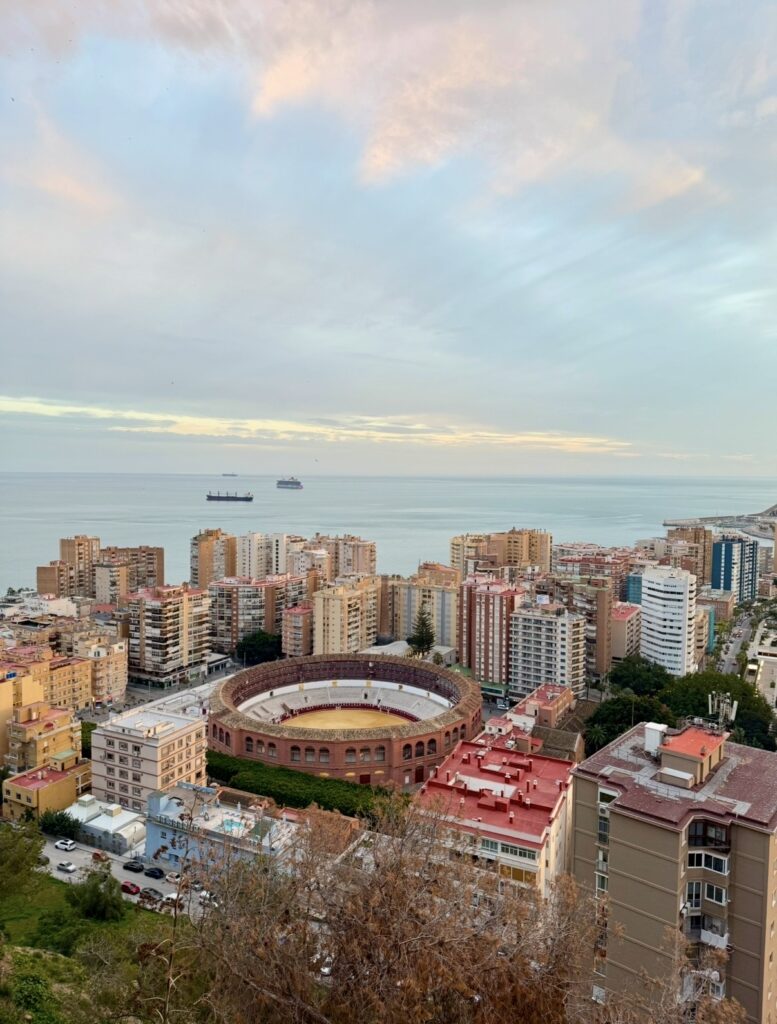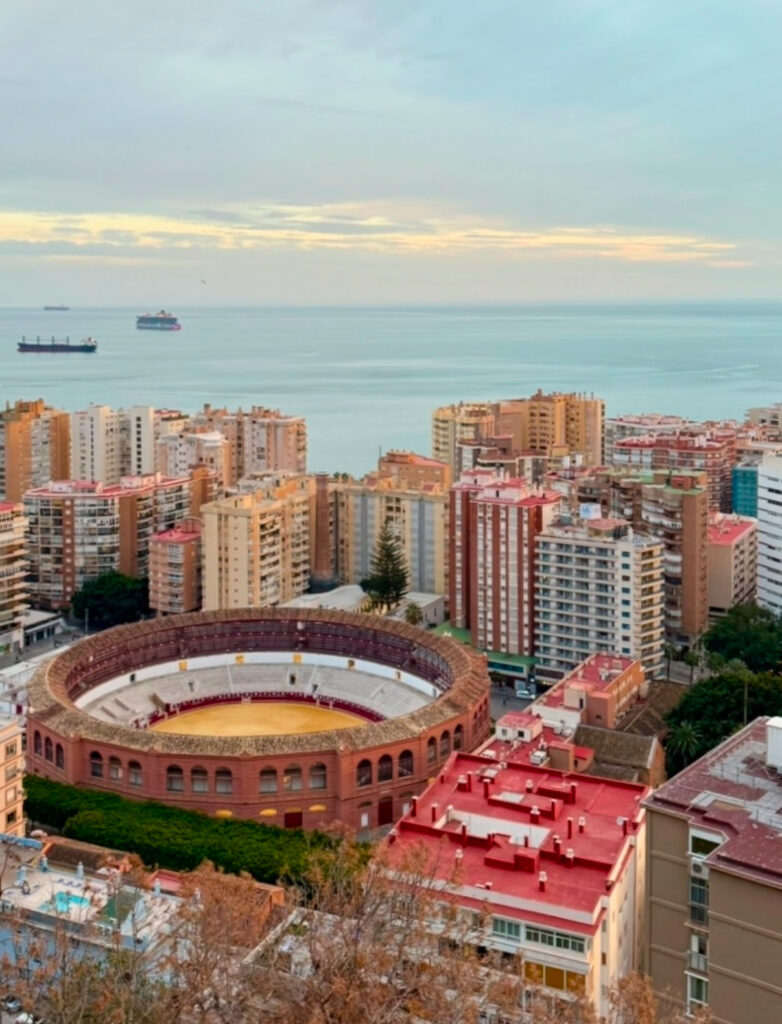

I took this photo during my winter trip after hiking to the top of the Mirador de Gibralfaro in Malaga, Spain. We reached the top of the viewpoint right before the sunset, and the colorful buildings of Malaga came alive. Although I could only capture one perspective of the view in a photo, taking a 360-degree glance from the viewpoint made me think how every individual I could see has lived a different story. From the cruise boats at the port to the port operators, the X-pats residing in the beach highrises, the tourists hiking up the mountain with me, and the Spaniards who have lived in Malaga their whole lives, each individual has a different upbringing and goal. I chose to focus on the Plaza de Toros de La Malagueta for the cropped image to highlight the Spanish traditions and culture associated with bullfighting. Although I believe bullfighting is unethical, it is fascinating that the Malaga Bullring is still functional and has become one of the most prominent bullrings in Spain. I named the image “The Matador” because that is the Spanish name for the bullfighter who tries to kill the bull. From this image, you can see inside the bullring, and it was easy for me to imagine the stadium full of people waiting to see who would win the fight. Cropping the image also helped remove some noise from the trees and grass along the hiking path. I followed the rule of thirds to ensure that the focal point brought the most attention and was more balanced. I love this image because if I were to focus further into the horizon on the freight ship in the background, I would have been able to consider the lives of a different group of people who sail the sea for a living.


Hi Kyla!
The original photo is stunning, like a postcard capturing the city’s grandeur. It offers a panoramic view, encompassing the sky, the sea, and diverse cityscapes.
The cropped image, however, presents a more intimate perspective. It focuses on the everyday life within the city. I’m intrigued by the potential narrative if the trees were entirely removed, cropping up to the base of the bullring. This would heighten the focus on the bullring itself, inviting the viewer to imagine a full stadium and ponder the spectacle of a bullfight.
Overall, you’ve skillfully cropped the photo. I’d have been curious to see a version with the trees completely removed from the bottom of the image.
Hello Kyla,
The original photo you selected is very pleasant. The context you described leads me to believe it was taken with a smartphone, yet the color and level of detail is reminiscent of professional travel photography. I resonate with your contemplation of the many lives contained within the frame. I often reflect on this when I’m on the highway for a long time or when I see a passenger plane overhead.
Considering these reflections, I understand why you chose to tighten the cropping to emphasize the ‘slice-of-life’ aspect of landscape photography. Moreover, I’m considering how much further you could take it… What happens if you tighten the crop all the way to a small handful of balconies in one of the residential buildings? How about if you focused entirely on one of the ships out in the water?
I like this idea because it leans into the voyeuristic aspect of photography, especially city photography. Digital cameras give you options for near-limitless zoom, and photo editing software lets you bring the composition in as far as you’d like, assuming there is enough pixel data to support these efforts.
Nice work!
Hi Kyla,
Both images are amazing, I appreciate your use of the rule of thirds and the perspective that it provides. In the cropped photo you put an emphasis on the arena, making it the main subject of the photograph. It allows for the viewer to strictly focus on the arena instead of everything in the first photo. I appreciate the message that your photos convey and the background info behind the photo itself. I would like to see what would happen if the photo was cropped more to bring more attention to the arena. Overall, you picked an interesting photograph and composition for this assignment.
Great use of the rule of thirds, Kyla!